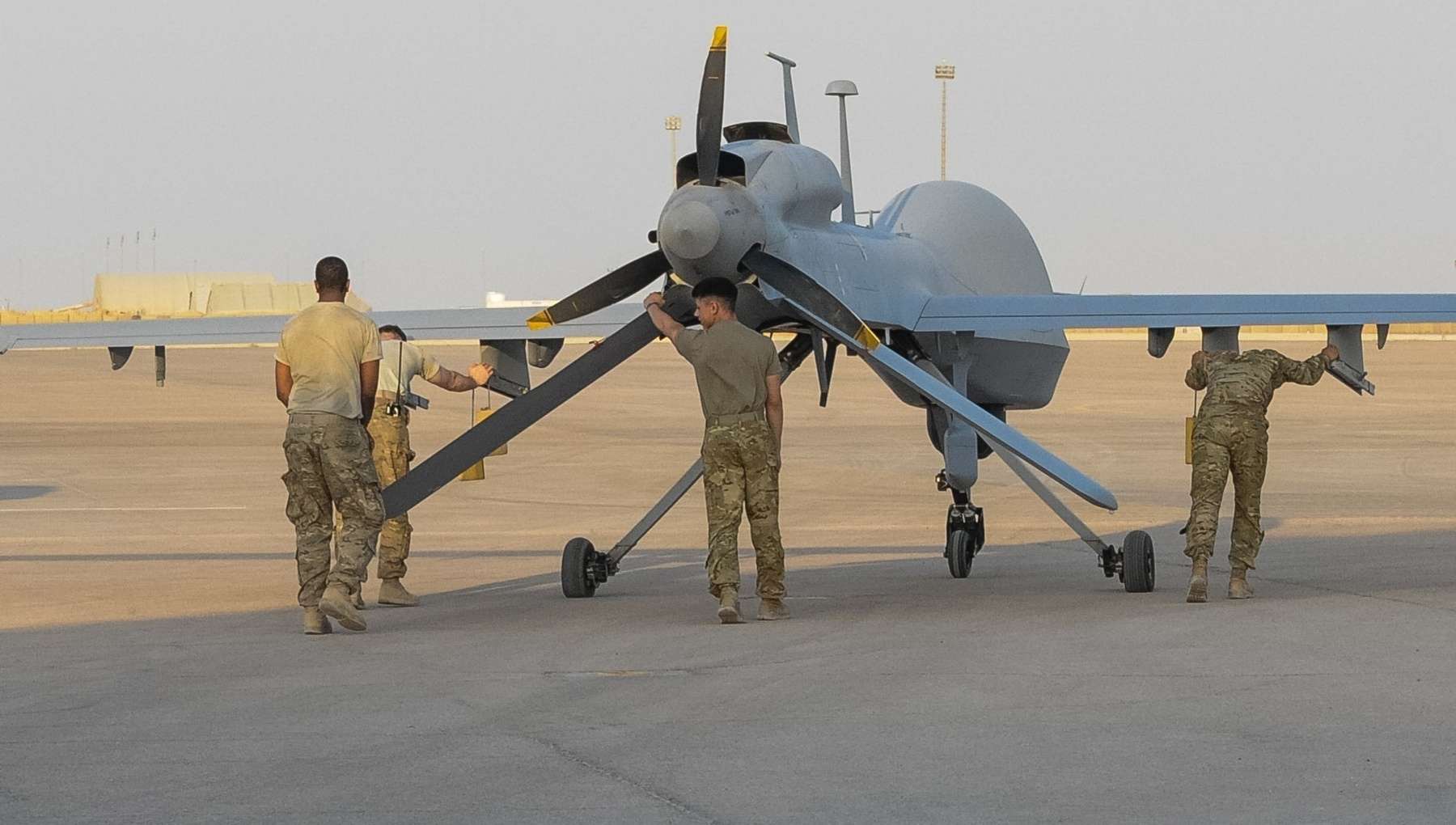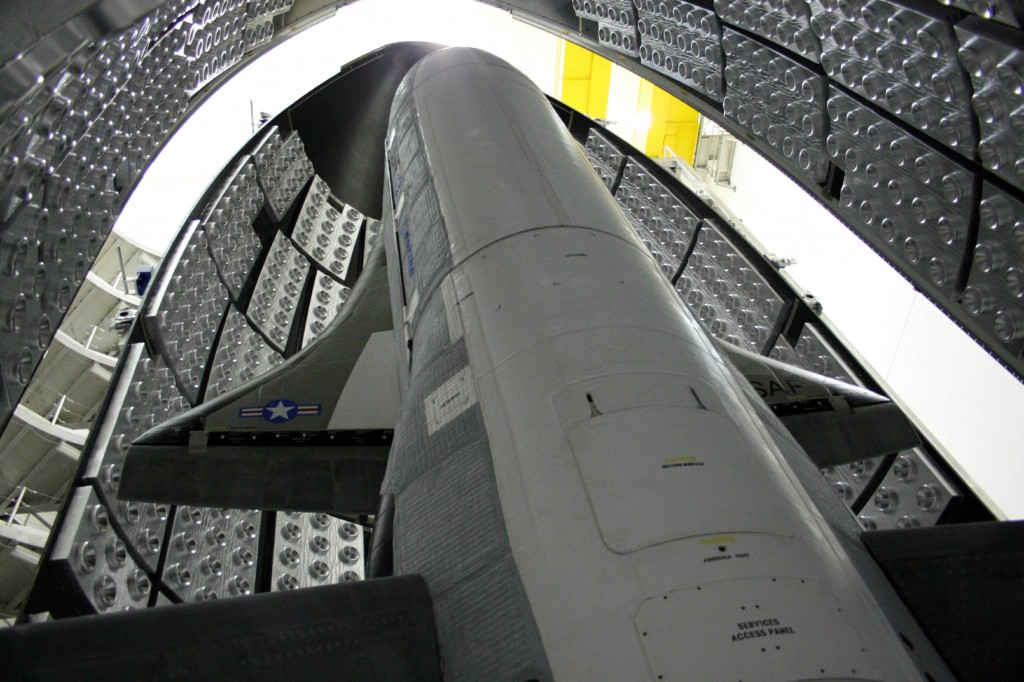The air mission briefing began promptly at Al Asad Air Base, Iraq. The Soldier in charge of the briefing, Spc. Eleazar Gonzalez, provided updates on the operating environment and flight schedules, and coordinated with other sections to cover maintenance and weather. The meeting ended with Gonzalez quizzing his fellow MQ-1C “Gray Eagle” operators on vital knowledge relating to the unmanned aerial system they operate.
With the advent of new technology, junior leaders in the U.S. Army experience larger strategic impact and handle more responsibility than ever before. Nowhere is this more prevalent than the 29th Combat Aviation Brigade’s Company D, 10th Aviation Regiment, 10th Mountain Division, which uses the Gray Eagle unmanned aerial system in support of Operation Inherent Resolve and Operation Spartan Shield.
“We have specialists and sergeants fulfilling the same crew obligations as warrant officers and commissioned officers in manned aviation units,” said Capt. Joshua Heiner, the commander of D Company. “It is definitely empowerment at the junior levels.”
Besides handling briefing duties that are normally handled by more senior ranks, Soldiers in D Company. also have the responsibility to remotely operate the multi-million dollar Gray Eagle as a two-Soldier team, fulfilling roles as aircraft commanders or payload operators.
“The aircraft commander is in charge of the flight and is responsible for the safety of the bird and all of its equipment,” said Sgt. Manuel Dominguez, a Gray Eagle aircraft commander with over 600 flight hours.
The Gray Eagle operators provide reconnaissance, surveillance and target acquisition for Operation Inherent Resolve, the campaign to defeat ISIS in Iraq and Syria.
“The value of our company is that we offer commanders on the ground a long-endurance, armed platform that can build situational awareness and develop targets, then provide a precision strike capability if the situation warrants,” said Heiner.
The ability provides a strategic impact due to higher-level units that rely on the intelligence gathered by the Gray Eagle’s payload operator.
“We provide full-motion video to higher echelons,” said Sgt. Blake Harrell, an aircraft commander who currently holds the company strike record.
The D Company call sign is “Slayer,” because the Gray Eagle operators also provide offensive strike capabilities in the fight against ISIS in Iraq.
“We have 20-year-old aircraft commanders responsible for putting ordnance on target in support of ground forces,” said Heiner. “They are doing an exceptional job at it.”
The UAS operators on numerous occasions identified targets for other strike platforms, specifically the AH-64E Apache from the 4th Squadron, 6th Cavalry Regiment and the U.S. Air Force.
From reconnaissance to strikes, the amount of responsibility on the Soldiers of D Company is daunting, but they work through their training and their initiative to achieve their high rate of success.
“We handle one step at a time — we use checklist discipline, training and we trust our leadership and the standardization office,” said Harrell. “We become great at multitasking and prioritizing.”
The Gray Eagle provides a wide array of support to the Coalition and partner forces, but overlooking the smallest details can keep the unmanned system out of the fight. Fortunately the maintainers of D Company remain focused on keeping the birds in the air.
“There is no place for complacency in aviation,” said Spc. Tyler Lewis, an unmanned aircraft system repairer.
Although the aircraft commanders bear the ultimate responsibility for the Gray Eagle when it is on flying missions, the maintenance Soldiers of D Company have the essential task of keeping the unmanned system in fighting shape.
“We keep up our readiness, keep the Gray Eagle mission capable,” said Spc. William Lindmeier, an unmanned aircraft system repairer.
The maintenance, also completed by junior Soldiers, has already exceeded the current fleet-wide standard of 50% Soldier, 50% civilian contract maintenance.
“We do 90% of the maintenance,” said Lindmeier.
The 90% Soldier maintenance standard is the Army’s long-term goal and has already been realized through the efforts of D Company Soldiers.
Throughout the deployment, D Company’s maintenance team had to handle numerous responsibilities in order to maintain the advanced unmanned aerial systems.
“We were juggling landing birds with post-flight preventative maintenance on top of our weekly maintenance,” said Spc. Draven King, an unmanned aircraft system repairer.
Through the efforts of the UAS maintainers, D Company’s Gray Eagle operators were able to fly over 2,000 hours for two months in a row, which is the most flight hours recorded by any Gray Eagle unit.
Evidenced by their record of success, the UAS maintainers will continue to work together to keep the Gray Eagles operational and in the fight.
“We have great team cohesion that contributes directly to our success,” said Winkler.
Adding to the complexity of D Company’s mission is the fact that the company itself is split between two locations, Kuwait and Iraq, and completes two distinct missions.
In Kuwait, D Company Soldiers support Operation Spartan Shield by conducting training flights and cross-training with other units and maritime missions, said Heiner.
Reconnaissance and surveillance training are viewed as opportunities for the Soldiers of D Company to sharpen their skills, said Chief Warrant Officer 2 Ryan Moore, a platoon leader and operations officer from D Company.
D Company is set to continue supporting operations throughout the U.S. Army Central area of operations by providing reconnaissance, surveillance, target acquisition and an offensive strike capability until later this fall when the unit will return to Fort Drum, N.Y.
The 29th Combat Aviation Brigade, an Army National Guard Brigade, will integrate another Gray Eagle company and continue to provide UAS support to Operation Inherent Resolve and Operation Spartan Shield for the remainder of the year.











